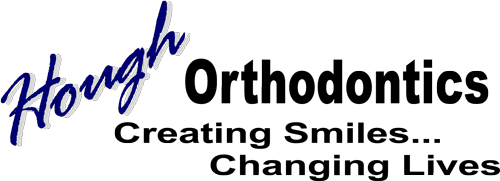No matter what you call the process, “braces”, “orthodontics” “getting your teeth straightened”, some of these facts about orthodontics might surprise you
The word “orthodontics” is of Greek origin.
Ortho means straight, or correct. Dont (don’t confuse with don’t) means tooth. Put it all together and you get straight teeth.
People have had crooked teeth from the beginning of time.
Okay, so maybe this one doesn’t surprise you. But did you know that humans have been concerned about their teeth for just as long! Archeologists have actually found Egyptian mummies with crude metal bands wrapped around their teeth. Hippocrates even wrote at 400 B.C. about the irregularities of teeth, aka misaligned jaws and crooked teeth.
About 2100 years later, a French dentist name Pierre Fachard wrote about an orthodontic appliance in his 1728 landmark book on dentistry, The Surgeon Dentist: A Treatise on the Teeth. Fachard is credited with being the father of modern dentistry. He described the bandeau, a piece of horseshoe-shaped precious metal which was literally tied to the teeth to align them, aka braces.
Orthodontics became the first dental specialty in 1900
Edward H. Angle founded the specialty. He was the first orthodontist: the first member of the dental profession to limit his practice to orthodontic only. Angle established what is now the American Association of Orthodontists, which admits only orthodontists as members.
Gold was the metal of choice for braces in circa 1900
How about filling your mouth up with a precious metal! Gold is malleable, so it was easy to shape into orthodontic appliances. Due to its malleable state, gold stretches easily. Consequently, patients had to see their orthodontists frequently for adjustments to keep their treatment on track.
Teeth respond to pressure over time
Again, also not rocket science, or their wouldn’t be a dental specialty dedicated to straightening teeth. But the important thing to know is that some pressure is beneficial, while some is harmful. Actions like thumb-sucking or swallowing in an abnormal way generate damaging pressure. Teeth can be pushed out of place and bone can become distorted. Orthodontists use appliances like braces or aligners to apply a constant, gentle pressure on teeth to guide them into their ideal positions.
Teeth can move because bone breaks down and rebuilds
So let’s get scientific for a second. Cells called “osteclasts” break down bone. “Osteblasts” cells rebuild bone. Amazing that one little letter can have so much effect on the meaning of a word. A balanced diet helps support bone remodeling. Which means, even though eating right is always good for the body, it is extremely important to feed your bones during and after orthodontic treatment to help build your bones back up.
Orthodontic treatment is a professional service
Orthodontic treatment is not a commodity or a product. The type of “appliance” used to move teeth is nothing more than a tool in the hands of an expert. Each tool has its uses, but not every tool is right for the job. A saw and a paring knife both cut, but you wouldn’t use a saw to slice an apple (at least we hope not, anyway!). The tools used are only as good as the person using the tool. So make sure you do your research to find the expert of the experts in the orthodontic field in your area!
Partnership for Success
Orthodontic treatment is a partnership between the patient and the orthodontist. White the orthodontist provides the expertise, treatment plan and appliances to straighten teeth and align jaws, it’s the patient who is the key to success.
The patient commits to following the orthodontist’s instructions on wearing rubber bands, avoiding foods that would break brackets, scheduling appointments as indicated by the orthodontist, and brushing and flossing. Teeth and jaws can move in the right directions and on schedule when the patient takes an active role in their treatment.
Orthodontic treatment is a partnership between the patient and the orthodontist. While the orthodontist provides the expertise, treatment plan and appliances to straighten teeth and align jaws, it’s the patient who’s the key to success.
If you have any questions regarding your specific treatment, we invite you to contact our office at 636.391.1959.

